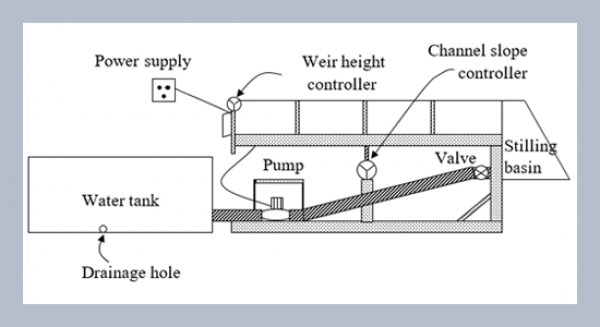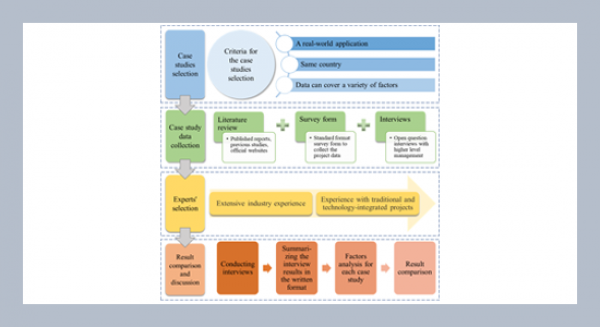REFERENCES
- [1] Nriagu, J. O. 1994. “Arsenic in the environmentt”. Wiley, New York.
- [2] Garelick, H., Jones, H., Dybowska, A., and Valsami-Jones, E. 2008. Arsenic pollution sources. Reviews of Environmental Contamination and Toxicology, 197: 17-60.
- [3] Tamaki, S. and Frankenberger, W.T. 1992. Environmental biochemistry of arsenic. Reviews of Environmental Contamination and Toxicology, 124: 79-104.
- [4] Brammer, H. and Ravenscroft, P. 2009. Arsenic in groundwater: a threat to sustainable agriculture in South and South-east Asia. Environment International, 35: 647-654.
- [5] Khan, N. I., Owens, G., Bruce, D., and Naidu, R. 2009. Human arsenic exposure and risk assessment at the landscape level: a review. Environmental Geochemistry and Health, 31: 143-166.
- [6] Bates, M. N., Smith, A. H., and Rich, C. H. 1992. Arsenic ingestion and internal cancer: a review. American Journal of Epidemiology, 135: 462-467.
- [7] Chen, C. J., Chen, C. W., Wu, M. M., and Kuo, T. L. 1992. Cancer potential in liver, lung, bladder and kidney due to ingested inorganic arsenic in drinking water. British Journal of Cancer, 66: 888-892.
- [8] US Environmental Protection Agency. 2001. “National primary drinking water regulations: Arsenic and Clari-cations to compliance and new source contaminants monitoring”. USEPA, Washington, DC.
- [9] Tseng, W. P. 1977. Effects and dose-response relationships of skin cancer and black foot disease with arsenic. Environmental Health Perspectives, 19: 109-119.
- [10] Giles, D. E., Mohapatra, M., Issa, T. B., Anand, S., and Singh, P. 2011. Iron and aluminium based adsorption strategies for removing arsenic from water. Journal of Environmental Management, 92: 3011-3022.
- [11] Holl, W. H. 2010. Mechanisms of arsenic removal from water. Environmental Geochemistry and Health, 32: 287-290.
- [12] Burns, P. E., Hyun, S., Lee, L. S., and Murarka, I. 2006. Characterizing As(III, V) adsorption by soils surrounding ash disposal facilities. Chemosphere, 63: 1879-1891.
- [13] Violante, A. and Pigna, M. 2002. Competitive sorption of arsenate and phosphate on different clay minerals and soils. Soil Science Society of America Journal, 66: 1788-1796.
- [14] McLean, E. O. 1982. Soil pH and lime requirement. p.199-224. In A. L. Page et al. (ed.) “Methods of soil analysis”. Part 2. 2nd ed. Agron. Monogr. 9. ASA and SSSA, Madison, WI.
- [15] Tiessen, H., Bettany, J. R., and Stewart, J. W. B. 1981. An improved method for the determination of carbon in soil extracts by dry combustion. Communications in Soil Science and Plant Analysis, 12: 211-218.
- [16] Gee, G. W. and Bauder, J. W. 1986. Particle size analysis. p. 383-411. In A. L. Page et al. (ed.) “Methods of soil analysis”. Part 2, 2nd ed. Agron. Monogr. 9. ASA and SSSA, Madison, WI.
- [17] Rhoades, J. D. 1982. Soluble Salts. p. 167−179. In A. L. Page et al. (ed.) “Methods of soil analysis”. Part 2, 2nd ed. Agron. Monogr. 9. ASA and SSSA, Madison, WI.
- [18] Olsen, S.R. and Sommers, L.E. 1982. Phosphorus. p. 403-430. In A. L. Page et al. (ed.) “Methods of soil analysis”. Part 2, 2nd ed. Agron. Monogr. 9. ASA and SSSA, Madison, WI.
- [19] Mehra, O.P. and Jackson, M.L. 1960. Iron oxide removal from soils and clays by dithionite-citrate system buffered with sodium bicarbonate. p. 317-327. In Adaa Swineford (ed.) “Clays and Clay Minerals”. Proceedings of 7th National Conference, Washington DC, Pergamon Press, New York.
- [20] Schwertmann, U. 1964. The differentiation of iron oxide in soil by a photochemical extraction with ammonium oxalate. Pflanzenernaehr. Bodenkd, 105: 19-201.
- [21] Smith, E., Naidu, R., and Alston, A. M. 2002. Chemistry of inorganic arsenic in soils: II. Effect of phosphorus, sodium, and calcium on arsenic sorption. Journal of Environmental Quality, 31: 557-563.
- [22] Goldberg, S. 2002. Competitive adsorption of arsenate and arsenite on oxides and clay minerals. Soil Science Society of America Journal, 66: 413-421.
- [23] Prasad, G. 1994. “Removal of arsenic (V) from aqueous systems by adsorption onto some geological materials, Ph.D. thesis”. Department of Applied Chemistry, Banaras Hindu University, India.
- [24] Oscarson, D. W., Huang, P. M., Liaw, W. K., and Hammer, U. T. 1983. Kinetics of oxidation of arsenite by various manganese dioxides. Soil Science Society of America Journal, 47: 644-668.
- [25] Goh, K. H. and Lim, T. T. 2004. Geochemistry of inorganic arsenic and selenium in a tropical soil: effect of reaction time, pH, and competitive anions on arsenic and selenium adsorption. Chemosphere, 55: 849-859. [26] Bissen, M. and Frimmel, F. H. 2003. “Arsenic -a Review”. Part I: Occurrence. Toxicity. Speciation. Mobility. Acta Hydrochim. Hydrobiol. 31.
- [26] Wagner, F., Berner, Z., Stüben, D., Bundschuh, J., and Bhattacharya, P. D. 2005. Chandrasekharam (Eds.), “Natural Arsenic in Groundwater: Occurrences, Remediation and Management”. Taylor & Francis, Balkema, p. 3.
- [27] McGeehan, S. L. and Naylor, D. V. 1994. Sorption and redox transformation of arsenite and arsenate in two flooded soils. Soil Science Society of America Journal, 58: 337-342.
- [28] Barrachina, A. A. C., Carbonell, F. M. B., and Beneyto, J.J.M. 1996. Kinetics of arsenite sorption and desorption in Spanish soils. Communications in Soil Science and Plant Analysis, 27: 3101-3117.
- [29] O’Reilly, S. E., Strawn, D. G., and Sparks, D. L. 2001. Residence time effects on arsenate adsorption/desorption mechanisms on goethite. Soil Science Society of America Journal, 65: 67-77.
- [30] Masscheleyn, P. H., Delaune, R. D., and Patrick, W. H. 1991. Arsenic and selenium chemistry as affected by sediment redox potential and pH. Journal of Environmental Quality 20: 522-527.
- [31] Sadiq, M. 1997. Arsenic chemistry in soils-an overview of thermodynamic predictions and field observations. Water Air and Soil Pollution, 93: 117-136.
- [32] Pierce, M. L. and Moore, C. B. 1982. Adsorption of arsenite and arsenate on amorphous iron hydroxide. Water Research, 16: 1247-1253.
- [33] Xu, Y. H., Nakajima, T., and Ohki, A. 2002. Adsorption and removal of arsenic(V) from drinking water by aluminumloaded Shirasu-zeolite. Journal of Hazardous Materials, 92: 275-287.
- [34] Garcia-Sanchez, A., Alvarez-Ayuso, E., and Rodriguez-Martin, F. 2002. Sorption of As(V) by some oxyhydroxides and clay minerals. Application to its immobilization in two polluted mining soils. Clay Minerals, 37: 187-194.















